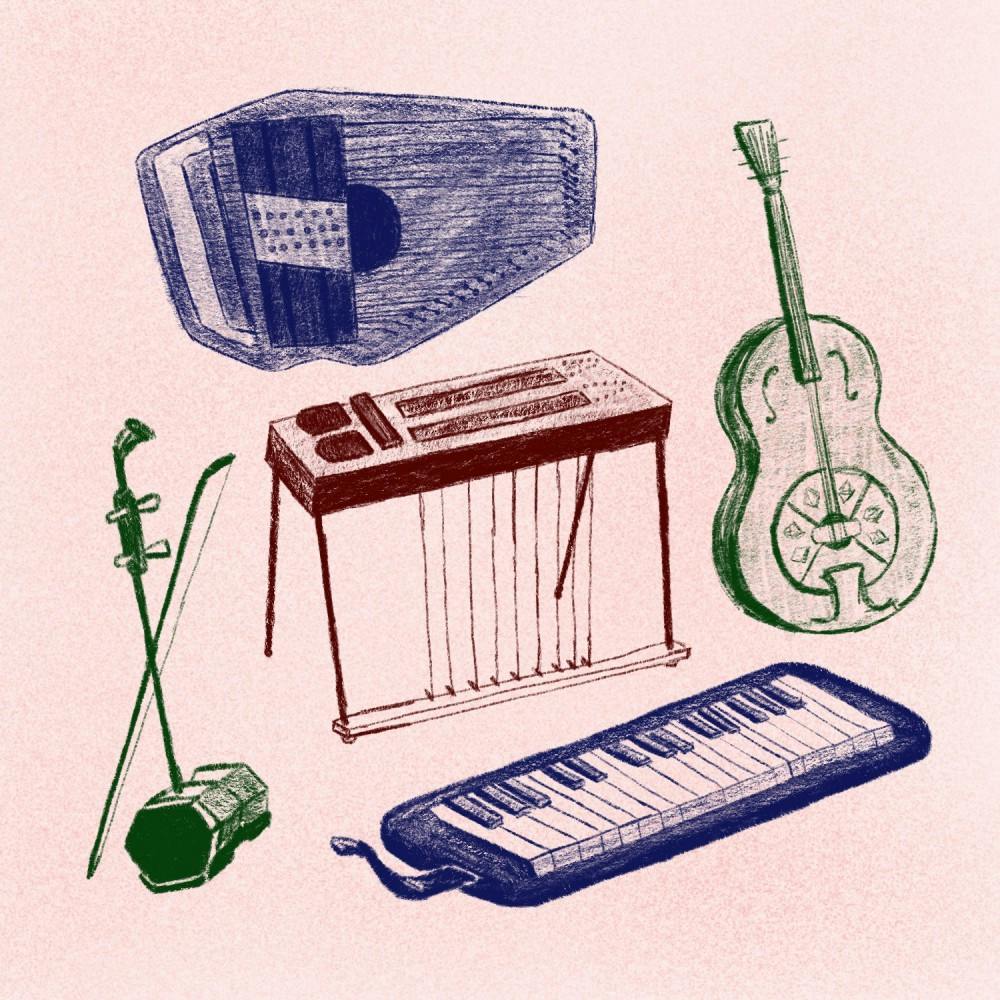Music is fueled by innovation, and that does not exist only in styles and trends. Instead, musical instruments themselves are always being invented and modified in response to the needs of an era. When people think about musical instruments, they often only think of the basic examples (violins, pianos, flutes, etc.), but there are so many more that deserve more love. In particular, American folk and bluegrass music is home to countless underrated instruments, and below is a selection of five such instruments that deserve your attention.
Autoharp
The autoharp is an upright handheld zither that consists of a set of chord bars and dampers that, when pressed, create chords for the musician to strum against. The term “autoharp” was originally trademarked by the Oscar Schmidt manufacturing company in 1926, but the design itself was patented in Philadelphia in 1883 by Charles F. Zimmerman. The instrument, thereafter, became a symbol of American music throughout the decade. Since then, however, the term has become generalized to describe all such instruments. The autoharp remained acoustic until the 1960's, when Harry DeArmond designed a magnetic pickup that introduced the electric autoharp to the world.
Both the acoustic and electric autoharp are still in use today and primarily exist in the sphere of folk music. Every strum of the autoharp adds an air of melancholy to a song; its lilting melodies exist in the liminal space between classical and folk music and its high rattling harmonies fill each piece with a specific warmth.
Resonator Guitar
The resonator guitar is a form of acoustic guitar that produces its music by transmitting the vibrations of the strum strings through the bridge and into at least one spun metal cone. This design differs from that of the classic acoustic guitar, as the latter transmits the sound through the sounding board of the instrument. In the era before electric guitars, the resonator was invented in an attempt to amplify the sound of an acoustic guitar so that it could be heard over the rest of the dance band.
In the 1920s, guitarist George Beauchamp and violinmaker John Dopyera worked to blend elements of the gramophone with those of the guitar and the violin and, after a few false starts, produced the first resonator. Their resonator, and the subsequent models, are played in the same manner as the classical acoustic guitar with all of the chords being the same.
What distinguishes this guitar from its predecessor is the way in which it not only amplifies the sound, but also creates a brassy twang in each strum. The tone of the resonator guitar is able to cut through any ambient noise and establish its melodies. Since its inception, the resonator guitar has found its way into a variety of genres, but it mainly resides in blues and bluegrass music.
Pedal Steel Guitar
Like the resonator guitar, the pedal steel guitar was invented in the aftermath of the popularization of the steel guitar was first in 19th century Hawaii and 20th century mainland United States. After Beauchamp and Dopyera discovered a way to amplify the sound of guitars in the process of inventing the resonator, many musicians began to experiment with that technology and ended up combining it with the lap guitar. Through years of additional modifications, such as simplifying the shape and adding pedals to change the pitch, the pedal steel was born.
The many features of this multifaceted instruments expand its musical range far beyond that of the traditional guitars and allow it to mirror the human voice. Nowadays, the pedal steel is typically used in American country music, but it is also common in Sacred Steel music, an African–American gospel tradition developed in the 1930s, as well as Nigerian and Indian music.
The Hang
The Hang, colloquially known as the hang drum, is a percussion instrument invented by Felix Reohner and Sabina Schärer in 2000. It consists of two steel half–shells that create a convex shape around a hollow center. The top side, known as the “Ding” side, consists of a center note and seven or eight tone fields around the center, while the bottom side, known as the “Gu” side, only has one note hammered in. The Hang was inspired by steelpan drums, and is played by hitting the different tone areas by hand.
The thrumming of the Hang infuses songs with a celestial overtone as the musician’s fingers jump around the various tone areas. Musicians typically use the Hang in atmospheric pieces to facilitate meditation and relaxation as well as simulate focus.
Theremin
The theremin is an instrument that has had many names. It has been the termenvox, the aetherphone, and many others. In the end, it was named after its inventor, Léon Theremin, as no other word could truly describe this unique instrument. Invented in 1920, the theremin is an electronic instrument that is played without any physical contact. A thereminist is able to control the sound of the instrument by moving their hands around its two metal antennas, which are able to sense the location and frequency of those movements. As is the case with many other electric instruments, the signals are amplified and then played through a speaker.
The theremin consequently produces a eerie sort of sound that brings listeners into the realm of Gothic horror and stormy nights. Unsurprisingly, it is mostly used in soundtracks and theatrical soundbites as well as 20th and 21st century avant–garde pieces. However, this instrument also has found a home for itself in rock music with many bands, such as The Rolling Stones, the Pixies, and The Beach Boys having experimented with it in the past.

